Lee Watson is no stranger to the bar scene. But he’s not the kind of bar owner or frenetic party boy you would expect. The man is calm and collected, with an almost scholarly air.
As a long-time cocktail consultant and co-owner of The Spirits Library, Nokal, and New York’s Gugu Room, Watson lights up not at the prospect of a wild night but at discussions on the history of gin or the chemical makeup of a cocktail.
This same curiosity extends to his collection of vintage books and antiques, elements that have become integral to the character of the bar that’s uniquely his own, The Spirits Library. In Watson’s world, mixology is as much about storytelling as it is about a delicious drink.
Meet Lee Watson, The Spirits “Librarian”
Watson is a veteran in the F&B scene, having created the bar programs of and consulted for Antonio’s, Okada, Discovery Shores, and Anya Tagaytay. “You have to find ways of creating the bar program, not for you, but for the concept,” he says.
 Lee Watson, cocktail consultant and co-owner of The Spirits Library, Nokal, and New York’s Gugu Room
Lee Watson, cocktail consultant and co-owner of The Spirits Library, Nokal, and New York’s Gugu Room
He recalls making a cocktail for chef Tonyboy Escalante. Taking from Antonio’s Tagaytay’s inclusion of fresh produce, he crafted a simple lemon drop (vodka, triple sec, lemon, and sugar)—but with a game-changing twist in the mix: arugula.
Watson has also worked on other bars in the past like the old ABV on Jupiter Street, a speakeasy tucked behind a burger joint so that late-night munchers would leave with not just a cheeseburger but a couple more drinks. He also worked with the classic Belle and Dragon bar, an “if you know you know” situation where the bar had another secret speakeasy inside that could only be accessed by walking through coats in a wardrobe (it gave Narnia vibes). You might also remember the apothecary-like Bitters in BGC with its collection of botanicals and mason jars.
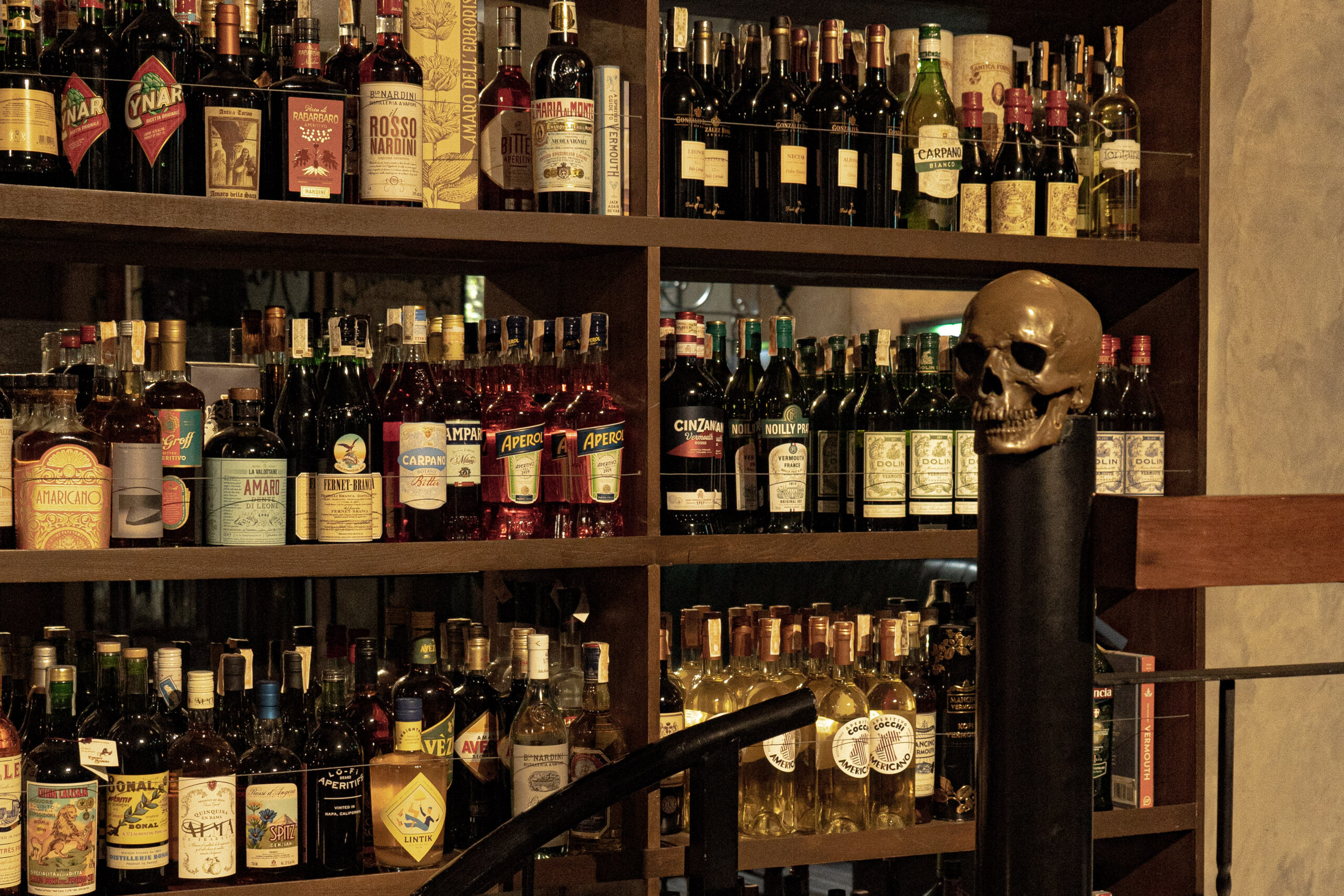 Details in Watson’s Poblacion bar, The Spirits Library
Details in Watson’s Poblacion bar, The Spirits Library
Watson was originally a numbers guy, taking up physics in Portland, then shifting to economics. This was until he decided to pursue the HRM program at Le Cordon Bleu, graduating magna cum laude. He also shares that his mother was an academic, Harvard master’s and all.
It still seems a little strange that such a bookish guy would own a bar. But it’s precisely his background and approach that adds a unique sociologist-like perspective to bartending.
 The first floor of The Spirits Library
The first floor of The Spirits Library
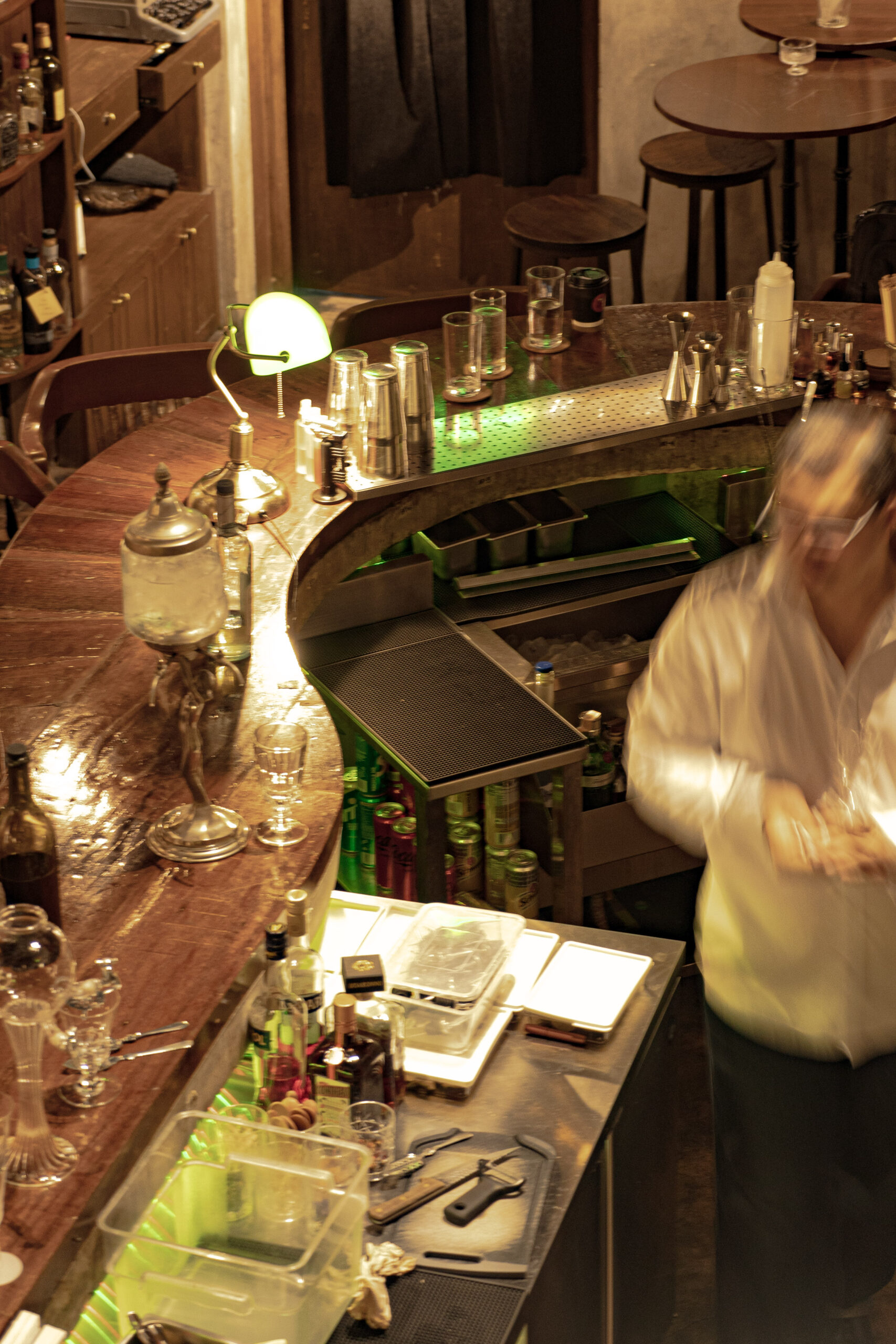
“I liked the idea of creating social environments, places where people come together and socialize and interact… How do you make the guests feel when they walk in? It’s not about making the perfect drink or making art in the glass. It’s how you entertain the guests. And this is a catalyst for my philosophy towards service. To me, in a bar, you don’t sell alcohol. You sell experience.”
The Spirits Library experience
When you first walk into The Spirits Library, you’re definitely in for an experience. Unlike many bars, the ceilings are high, reaching about two stories. Yet, paradoxically, the space feels cozy and intimate. As a collector of vintage bottles, many over a century old, Watson fills up one wall with a mosaic of these bottles, which the bartenders have to scale via a ladder. On the shelves are weathered leather tomes, vintage typewriters, and glistening crystal and brass scales.
“The aesthetic I’m going for here is the den of your eccentric uncle… That kind of walking through the space and seeing all these curiosities and oddities.”
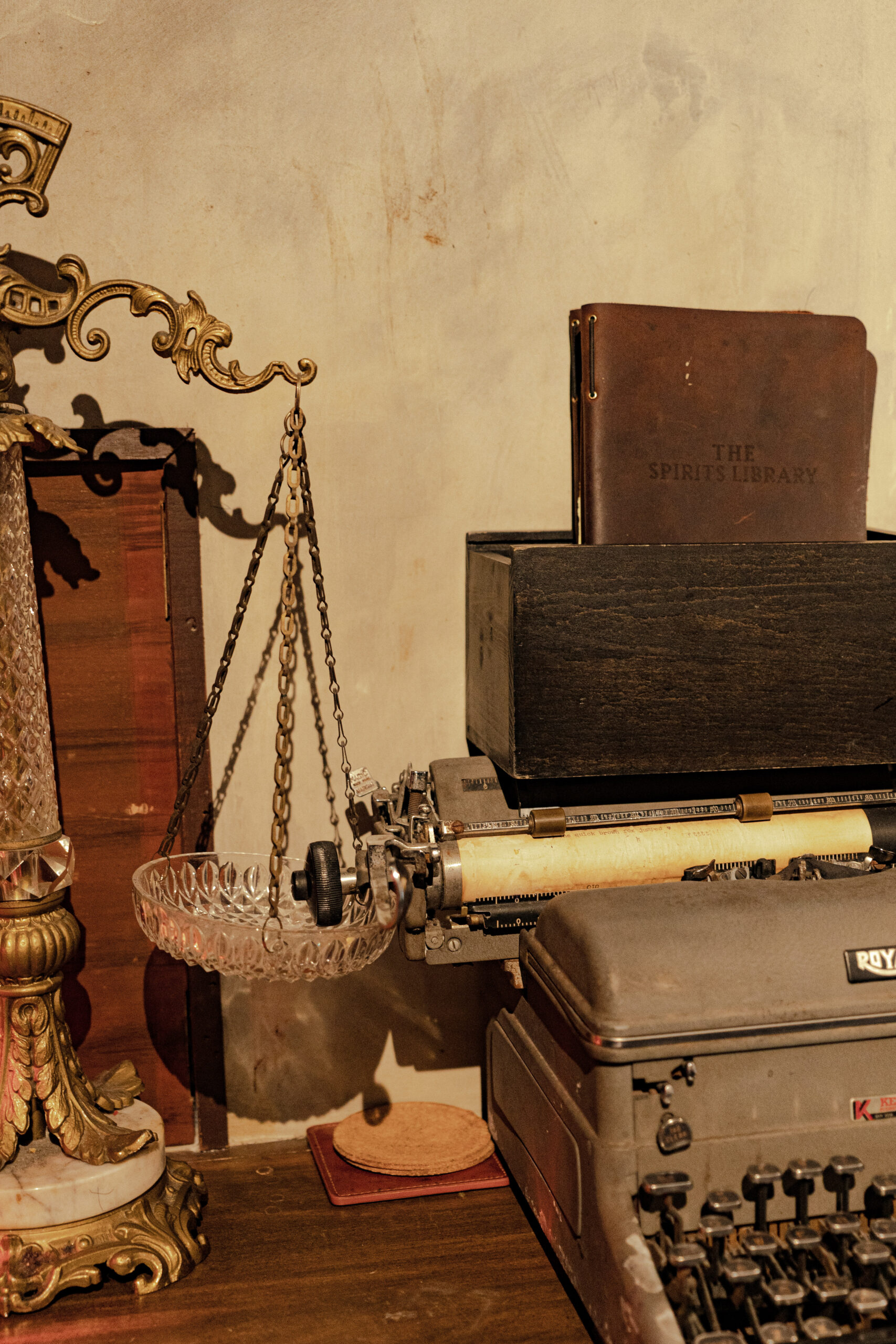 “The aesthetic I’m going for here is the den of your eccentric uncle… That kind of walking through the space and seeing all these curiosities and oddities,” Watson says
“The aesthetic I’m going for here is the den of your eccentric uncle… That kind of walking through the space and seeing all these curiosities and oddities,” Watson says
In front of this towering wall of alcohol, the central bar top can be converted into a stage. This is meant to save visitors the 15 minutes it takes to order a drink when watching a live show. Instead of turning one’s back to the music, a drink can be mixed right in front of you.
The Spirits Library serves up live music, too. Every Wednesday is blues night, while Thursday features live jazz. The last Saturday of every month features a special treat—a burlesque show. Last June was a Shakespeare-themed program of the “Merchant of Venice.”
“To some degree the bar is escapism. You work your nine-to-five, and then they get out. They don’t want to think about work. It’s an opportunity to get away from all that. Alice in Wonderland, down the rabbit hole, go in here and it’s a whole new world—that’s a very common element within the bar.”
 The bar’s towering wall of alcohol
The bar’s towering wall of alcohol
When it comes to drinks, the current bar program is based on nostalgia, which Watson credits much of the conception to the general manager Ralph Santos.
One drink is named “Douha,” which takes from the original Chinese name for taho. The drink mixes whiskey with ingredients like amaro averna and arnibal syrup as well as a vanilla liqueur and soymilk. Next to it is prose that writes, “A reminder of the first pleasant sound you hear in the morning after the wakeup call of the rooster’s crow… Nothing makes you get out of bed like the iconic call of the taho vendor on his morning route.”
Another is sweetly named “Cariño,” taking from the Spanish delicacy of caramelized sugar “tira-tira.” The drink is made with butter-fat-washed Irish whiskey, coconut syrup, sherry, and some chocolate bitters. Its description notes how just like kids were rewarded for good deeds with something sugary, this drink is transformed into a sentimental, alcoholic treat for grownups.
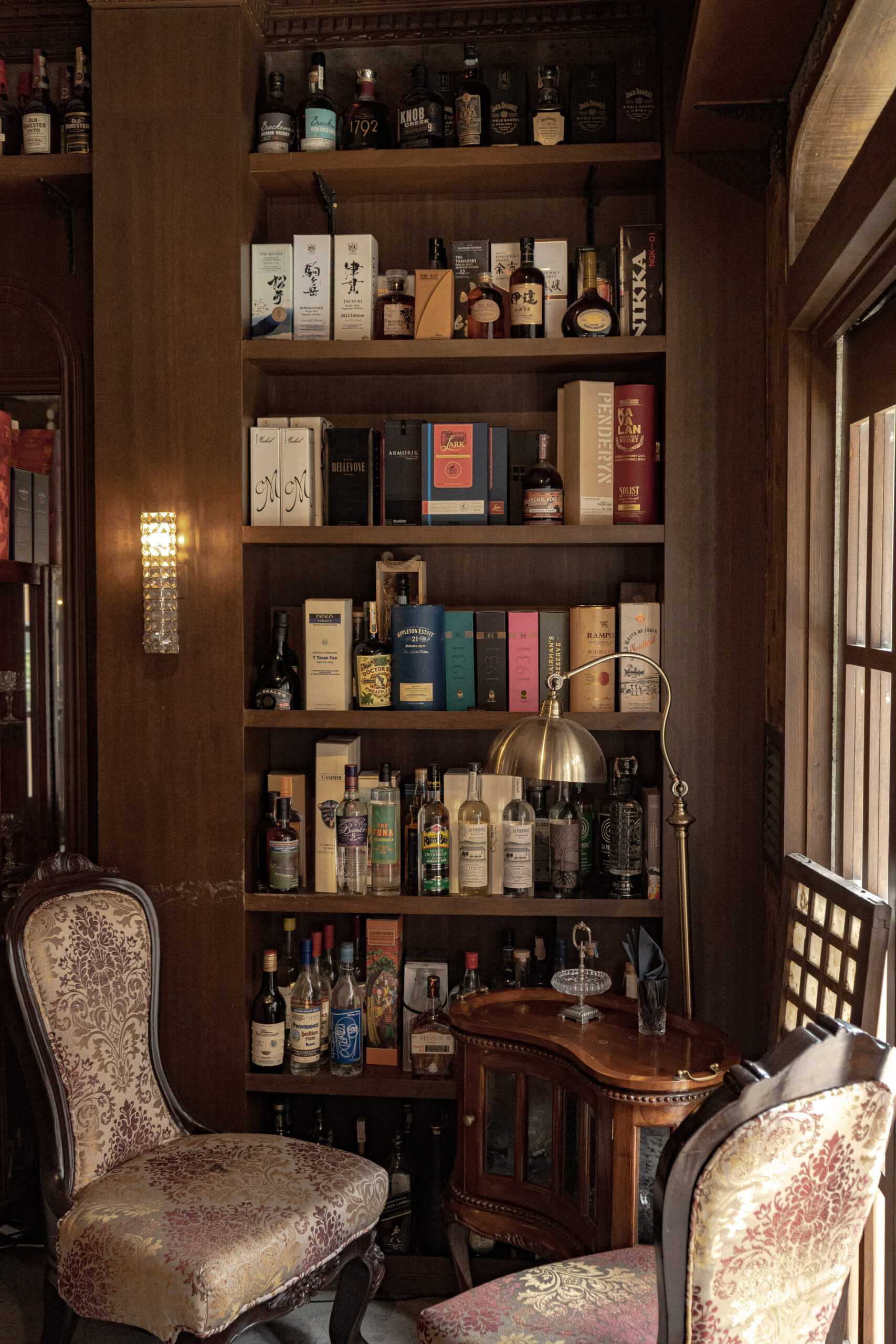 The special private room called “Detention,” where the bar notoriously has no menu
The special private room called “Detention,” where the bar notoriously has no menu
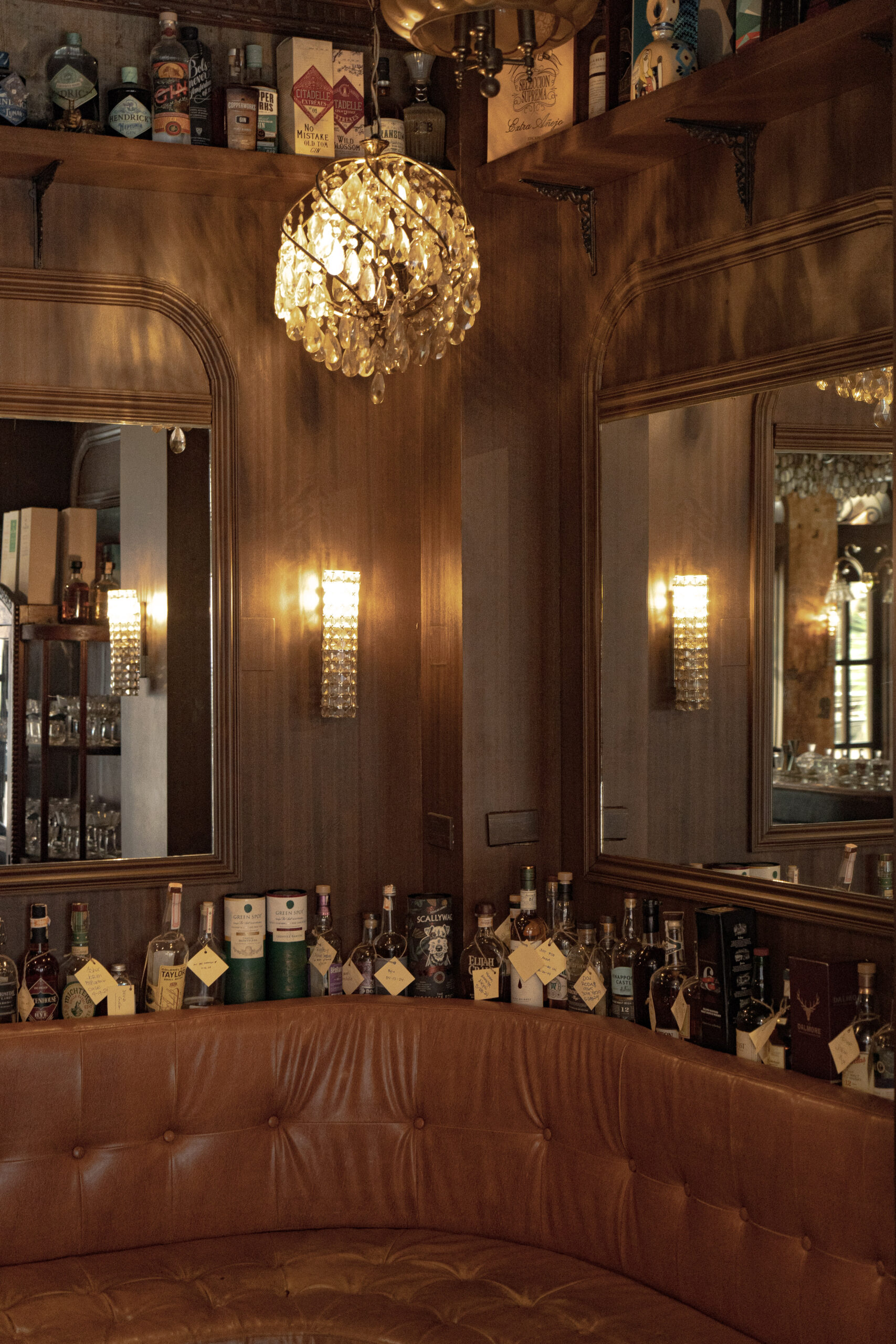
On the second floor is a secret, special private room called “Detention,” where the bar notoriously has no menu.
“When making drinks for guests, you have to listen to the guests and ask what they like. So you’ll start with the base spirit. You’ll have a tequila person or a whiskey person. You’ll ask what kind of mood are you in. Refreshing? Heavy? Boozy? Complex? You ask those questions to be guided along the way. My guys at Spirits, I trained them to do that sort of thing. So it’s one of the few bars in town where we highlight bespoke cocktails and encourage the guests to come to the bar and order off-menu.”
For serious cocktail enthusiasts, the bar hosts regular guest shifts to look forward to, featuring bartenders from fashionable bars and lounges in Hong Kong, Thailand, Singapore, America, and more.
Lee Watson’s new menu at The Spirits Library
The nightlife industry is notorious for quick turnovers, as barflies are always looking for the next fun thing. But with enough experience, Watson knows you have to keep the ball rolling and the wheels turning. Currently, he is working on crafting a new cocktail menu.
As an avid book collector, Watson’s new menu takes from an old drinking guidebook, initially published in 1939. The book is called “The Gentleman’s Companion: Being an Exotic Drinking Book Or, Around the World with Jigger, Beaker, and Flask” and documents the travels of Charles Baker, a man who traveled the world on cruise ships throughout the 1920s and 1930s when prohibition was implemented in the US.
View this post on Instagram
“As you look at the history of a lot of these famous cocktails around the region, they were always tied to a specific hotel. In Singapore, it was the Singapore Sling. You have the Yokohama Hotel in Japan… You see these American-style cocktails in the Philippines. They’re being served at places like the Manila Hotel, The Manila Polo Club, and Baguio Country Club… This is the theme for the new menu. We’re taking this historical book and the references of these old historical cocktails from the Philippines, to what I consider a forgotten history, and bringing it back. Of course, we’ll do interpretations and adjust them from our palates, but all the drinks are inspired by these original cocktails.”
**
Watson has one more story to tell.
He brings out a 120-year-old bottle of absinthe, labeled Pernod Fils. The musty green bottle costs a small fortune. Recounting the backstory of Prohibition, the expert on alcohol dispels the notion of the drink as a hallucinogenic poison. Bringing out another bottle, this time of champagne, he slices the Möet glass with a saber. Mixing the two alcohols together, he creates “Death in the Afternoon,” a drink with a literary reference to Ernest Hemingway’s novel on bullfighting. “Hemingway was history’s most prolific barfly,” Watson says. “And every bar needs a good Hemingway reference.”
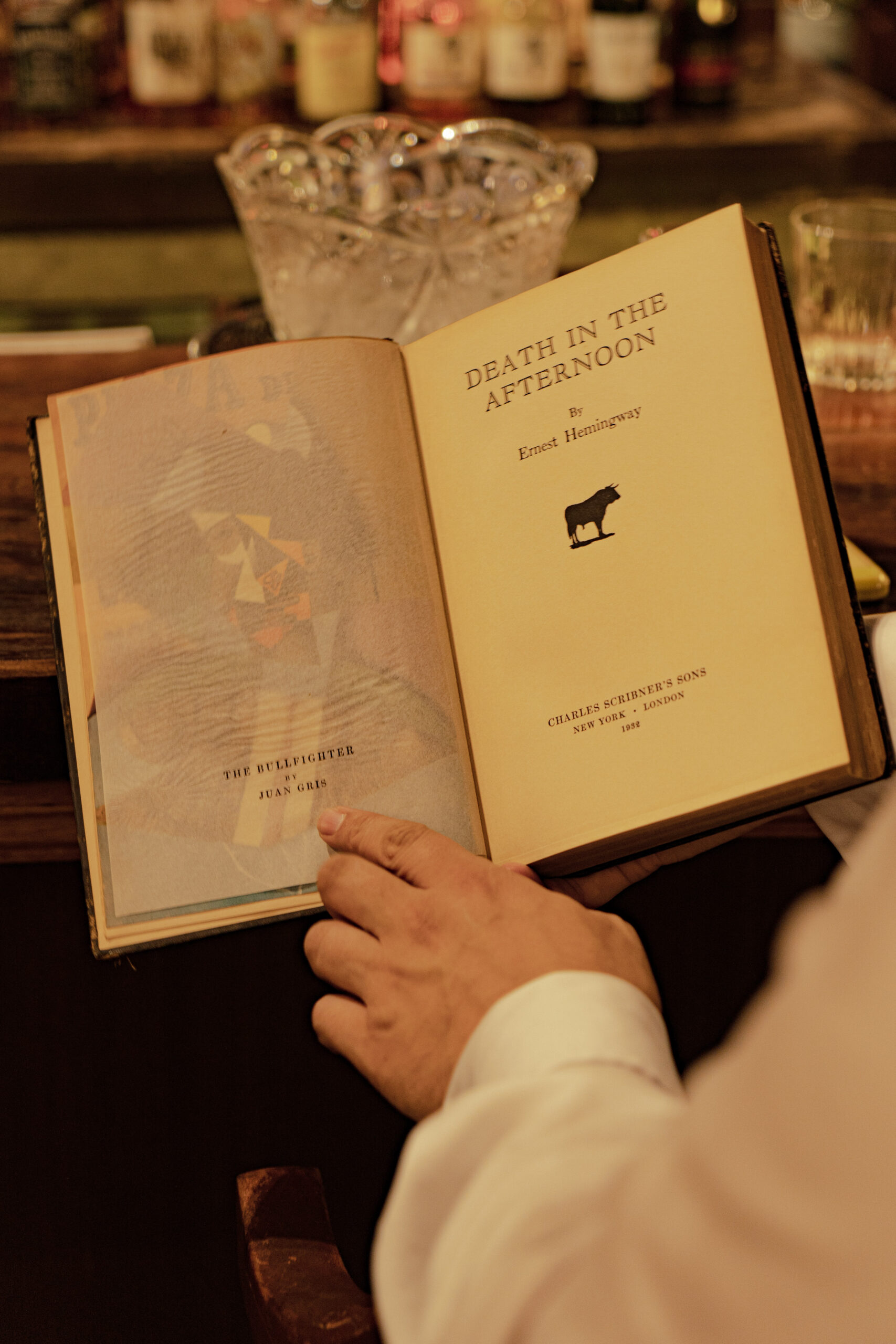 Hemingway’s 1932 book “Death in the Afternoon” about the history, ceremony and traditions of Spanish bullfighting
Hemingway’s 1932 book “Death in the Afternoon” about the history, ceremony and traditions of Spanish bullfighting
Hemingway once said, “All good books are alike in that they are truer than if they had really happened and after you are finished reading one you will feel that all that happened to you and afterwards it all belongs to you: the good and the bad, the ecstasy, the remorse and sorrow, the people and the places and how the weather was.”
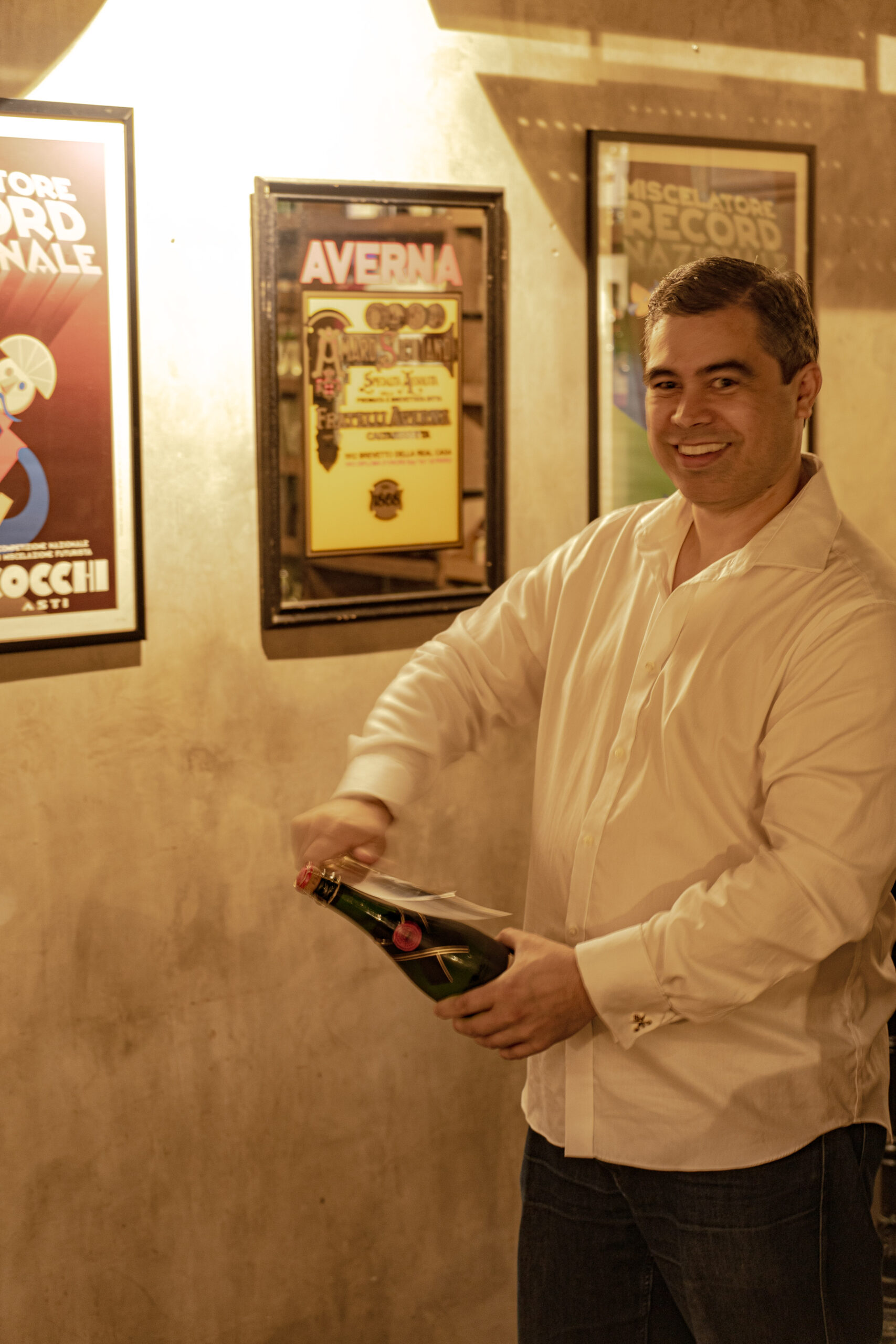 Watson readies to slice the Möet champagne bottle with a saber
Watson readies to slice the Möet champagne bottle with a saber
In this same way, The Spirits Library is like Hemingway’s version of a good book—a space for sharing a drink over the good and the bad, feelings of ecstasy, remorse, or sorrow, with people all out in the same place, taking shelter from the same storm.
The Spirits Library is open daily, 6 p.m. to 3 a.m. at 4963 Guerrero, Makati. For reservationsphmacao, call 0917 160 1162. Photography by JT Fernandez. Special thanks to Gino Cruz.